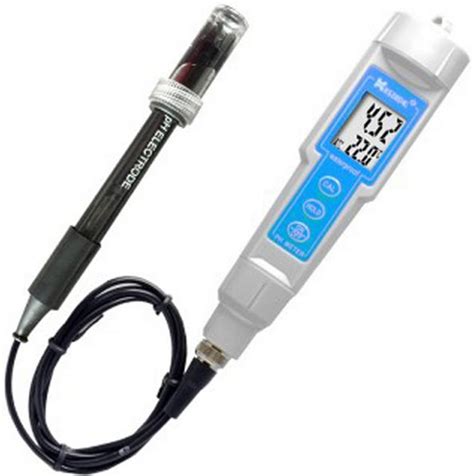What is a pH sensor?
A pH sensor is a device that measures the hydrogen ion activity in a solution, which indicates its acidity or alkalinity. The term “pH” stands for “potential of hydrogen” and is a logarithmic scale that ranges from 0 to 14. A pH value of 7 is considered neutral, while values below 7 are acidic, and values above 7 are alkaline or basic.
The pH Scale
The pH scale is a logarithmic scale that represents the concentration of hydrogen ions in a solution. Each unit change in pH represents a tenfold change in the hydrogen ion concentration. For example, a solution with a pH of 6 is ten times more acidic than a solution with a pH of 7.
| pH Value | Solution Type |
|---|---|
| 0-6 | Acidic |
| 7 | Neutral |
| 8-14 | Alkaline |
Types of pH Sensors
There are several types of pH sensors available, each with its own advantages and limitations. The most common types include:
Glass Electrode pH Sensors
Glass electrode pH sensors are the most widely used type of pH sensor. They consist of a glass bulb filled with a buffer solution and a reference electrode. When the glass bulb is immersed in a solution, hydrogen ions in the solution exchange with the ions in the buffer solution, creating a potential difference that is proportional to the pH of the solution.
ISFET pH Sensors
Ion-Sensitive Field-Effect Transistor (ISFET) pH sensors are solid-state devices that use a field-effect transistor to measure the pH of a solution. They are more durable and require less maintenance than glass electrode pH sensors but are more expensive.
Optical pH Sensors
Optical pH sensors use a pH-sensitive dye that changes color depending on the pH of the solution. They are non-invasive and can be used for continuous monitoring of pH in a solution. However, they are less accurate than glass electrode and ISFET pH sensors.
How Does a pH Sensor Work?
A pH sensor works by measuring the potential difference between a reference electrode and a sensing electrode. The reference electrode provides a stable potential, while the sensing electrode’s potential varies depending on the pH of the solution.
The Nernst Equation
The relationship between the potential difference and the pH of the solution is described by the Nernst equation:
E = E₀ + (2.303RT/nF) × log(aH⁺)
Where:
– E is the measured potential
– E₀ is the standard potential
– R is the universal gas constant
– T is the absolute temperature
– n is the number of electrons transferred
– F is the Faraday constant
– aH⁺ is the activity of hydrogen ions in the solution
Calibration
To ensure accurate measurements, pH sensors must be calibrated regularly using standard buffer solutions with known pH values. The most common calibration points are pH 4, 7, and 10.

Applications of pH Sensors
pH sensors have a wide range of applications in various industries, including:
Chemical Processing
In chemical processing, pH sensors are used to monitor and control the pH of reactants and products to optimize reaction conditions and ensure product quality.
Environmental Monitoring
pH sensors are used to monitor the pH of water bodies, soil, and air to assess their quality and detect pollution.
Food Production
In food production, pH sensors are used to monitor the pH of food products to ensure their safety, quality, and shelf life.
Medical Applications
pH sensors are used in medical applications to monitor the pH of bodily fluids, such as blood and urine, to diagnose and treat various conditions.
Frequently Asked Questions (FAQ)
-
What is the difference between a pH sensor and a pH meter?
A pH sensor is the sensing component that measures the pH of a solution, while a pH meter is the device that displays the pH value measured by the sensor. -
How often should a pH sensor be calibrated?
The frequency of calibration depends on the application and the environment in which the sensor is used. In general, pH sensors should be calibrated at least once a week or whenever the sensor is exposed to extreme pH values or temperatures. -
Can a pH sensor be used to measure the pH of solids?
No, pH sensors are designed to measure the pH of liquids or semi-solids. For measuring the pH of solids, a special type of pH sensor called a flat surface electrode can be used. -
What is the lifespan of a pH sensor?
The lifespan of a pH sensor depends on the type of sensor and the environment in which it is used. Glass electrode pH sensors typically last for 1-2 years, while ISFET pH sensors can last for 3-5 years or more. -
How should a pH sensor be stored when not in use?
When not in use, a pH sensor should be stored in a storage solution that is specific to the type of sensor. For glass electrode pH sensors, the storage solution should be a pH 4 buffer solution or a 3M KCl solution. ISFET pH sensors should be stored dry.
Conclusion
pH sensors are essential tools for measuring the acidity or alkalinity of a solution. They play a critical role in various industries, from chemical processing to environmental monitoring and food production. By understanding how pH sensors work and their applications, we can better appreciate their importance in ensuring the quality, safety, and efficiency of various processes.

No responses yet